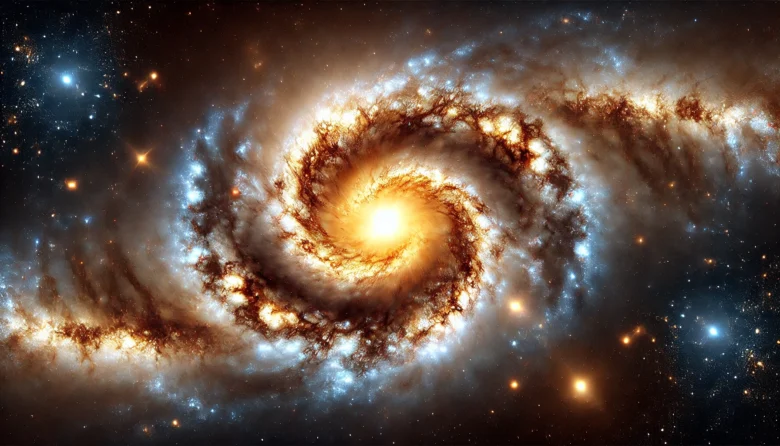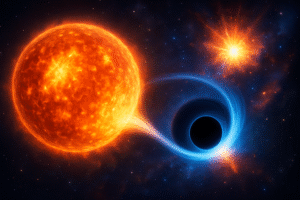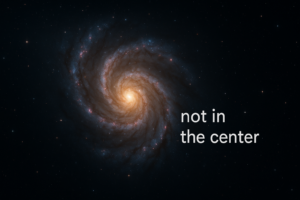When we look at the night sky, the twinkling stars often evoke wonder and curiosity. But have you ever paused to consider what these celestial bodies are made of? The stars are not just distant points of light; they are cosmic forges where the building blocks of our universe are created. This fascinating process is known as stellar nucleosynthesis, and it’s the very reason why we have the elements that make up everything around us—from the oxygen we breathe to the gold in our jewellery. In this blog, we’ll delve into the chemistry of stars and explore how elements are formed within these magnificent giants.
The Birth of a Star and the Formation of Hydrogen and Helium
The journey of a star begins in a dense region of space known as a molecular cloud, which is composed primarily of hydrogen (H) and helium (He). Under the force of gravity, these clouds collapse and heat up, forming a protostar. As the temperature and pressure rise in the core, hydrogen atoms begin to fuse together in a process called nuclear fusion. This fusion releases a tremendous amount of energy, which counterbalances the force of gravity, allowing the star to shine.
In the core of a young star, hydrogen fuses to form helium in a reaction known as the proton-proton chain. This is the most basic form of nucleosynthesis and the starting point for all other elements. The energy released in this process is what powers the star and allows it to emit light and heat.
Beyond Hydrogen and Helium: The Creation of Heavier Elements
As the star ages, it exhausts its hydrogen supply, and the core contracts while the outer layers expand, transforming the star into a red giant. In this phase, the temperature in the core becomes hot enough to fuse helium atoms into heavier elements like carbon (C) and oxygen (O). This process is known as the triple-alpha process, where three helium nuclei combine to form a carbon nucleus.
Stars with more mass can undergo further stages of fusion, creating even heavier elements like neon (Ne), magnesium (Mg), and silicon (Si). Each stage of fusion occurs at increasingly higher temperatures and pressures, with each new element being formed at the expense of the previous one. This layered structure of elements within a star is often compared to the layers of an onion, with the lightest elements on the outside and the heaviest in the core.

The Role of Supernovae: Forging the Heaviest Elements
While the fusion process in a star’s core can create elements up to iron (Fe), elements heavier than iron require a different kind of event to form—one of the most violent events in the universe: a supernova. When a massive star reaches the end of its life, it can no longer support the weight of its own core, leading to a catastrophic collapse. This collapse triggers a supernova explosion, during which temperatures and pressures become so extreme that rapid neutron capture (the r-process) can occur, leading to the formation of elements heavier than iron, such as gold (Au), platinum (Pt), and uranium (U).
Supernovae are crucial not only for the creation of heavy elements but also for dispersing them throughout the galaxy. These elements are released into space, where they can eventually contribute to the formation of new stars, planets, and even life itself. In a sense, the atoms in our bodies were once part of a star that lived and died billions of years ago—a concept poetically described as “we are made of star stuff.”
The Chemical Enrichment of the Universe
The universe started with only the lightest elements: hydrogen, helium, and trace amounts of lithium (Li). Over billions of years, the universe has been chemically enriched through the life cycles of stars and their explosive deaths. Each generation of stars contributes more complex elements to the cosmos, making subsequent generations of stars and planets richer in the materials necessary for life as we know it.
A prime example of this enrichment process is our own solar system. The Sun is a second-generation star, meaning it was formed from the remnants of previous stars that had already synthesized heavier elements. This is why we find diverse elements on Earth and within our solar system, from the iron in our blood to the silicon in our electronics.
Case Study: The Lifecycle of a Star Like Our Sun
To better understand the chemistry of stars, let’s examine the lifecycle of a star similar to our Sun.
1. Formation: The Sun formed approximately 4.6 billion years ago from a collapsing molecular cloud-primarily composed of hydrogen.
2. Main Sequence: For most of its life, the Sun has been in a stable phase called the main sequence, where it fuses hydrogen into helium in its core.
3. Red Giant: In about 5 billion years, the Sun will exhaust its hydrogen fuel and expand into a red giant, fusing helium into carbon and oxygen.
4. Planetary Nebula: Eventually, the outer layers of the Sun will be expelled, leaving behind a hot core called a white dwarf surrounded by a planetary nebula.
5. White Dwarf: The white dwarf will gradually cool and fade over billions of years, no longer undergoing any fusion.
While the Sun is not massive enough to explode as a supernova, the release of its outer layers will still contribute to the chemical enrichment of the galaxy.
Why Understanding Stellar Chemistry Matters
Stellar chemistry is not just an abstract concept; it has real-world implications that extend to various fields, from astronomy to materials science. For instance, the study of nucleosynthesis helps astronomers understand the composition of distant stars and galaxies. It also aids in the search for extraterrestrial life by identifying the elements necessary for life in other parts of the universe.
In materials science, the knowledge of how elements are formed informs the development of new materials and technologies. For example, rare elements formed in supernovae, like gold and platinum, are critical for electronics, medical devices, and even space exploration technologies.
Understanding the chemistry of stars also deepens our appreciation of the universe. It connects us to the cosmos in a profound way, reminding us that the elements that make up our world and our bodies were forged in the hearts of stars.
Conclusion
The chemistry of stars is a story of creation and transformation on a cosmic scale. From the simplest atoms of hydrogen and helium to the complex elements that make up our world, stars are the forges where these building blocks are formed. As we look up at the night sky, we can now appreciate that the twinkling lights are not just distant objects—they are the source of the elements that make life possible. So next time you gaze at the stars, remember that you are connected to them in the most fundamental way: you are made of the same stuff as the stars.
Author’s Note
Thank you for joining me on this cosmic journey through the chemistry of stars. I hope this blog has sparked your curiosity and deepened your appreciation for the incredible processes that shape our universe. Keep looking up!
G.C., Ecosociosphere contributor.
References and Further Reading
- NASA’s Stellar Nucleosynthesis
- Astronomy for Kids: Definition, Evolution, Facts & Activities. https://www.eurokidsindia.com/blog/exploring-outer-space-astronomy-for-young-children.php
- How Does Nuclear Fusion Make Life on Earth Possible – A Sustainable Pathway to a Low-Carbon Future. https://www.the-weinberg-foundation.org/how-does-nuclear-fusion-make-life-on-earth-possible/
- helium Archives – Universe Today. https://www.universetoday.com/tag/helium/amp/
- LIGO’s detection of neutron star collision was followed up with observations by dozens of NASA’s astronomical instruments – Firstpost. https://www.firstpost.com/tech/news-analysis/ligos-detection-of-neutron-star-collision-was-followed-up-with-observations-by-dozens-of-nasas-astronomical-instruments-4150037.html
- How Planetary Nebulae Turn Stardust into Life Ingredients. https://www.mexicanist.com/l/planetary-nebulae-where-stardust-meets-life/
- 10 Things You Should Know About the Sun. https://www.thoughtco.com/things-you-should-know-about-the-sun-3073449
- Why Doesn’t The Sun Go To College? Interesting Facts. https://www.scholarshipsincollege.com/why-doesnt-the-sun-go-to-college/
- The Power of the Universe: Exploring the Cosmos – English Plus Podcast. https://englishpluspodcast.com/the-power-of-the-universe-exploring-the-cosmos/




